By Lindsay Beebe
This year, Utah communities took a stand for clean energy.
By the end of 2019, 23 communities in Utah have adopted commitments to achieve 100% clean, renewable electricity by 2030, including some of Utah’s largest cities. 16 of those communities made commitments just this past year, thanks to the dedication of hundreds of local activists and a major win in the Utah legislature. In March, an innovative clean energy program authorized by H.B. 411, also known as The Community Renewable Energy Act, passed with overwhelming bipartisan approval through Utah’s majority-Republican State Legislature. The Community Renewable Energy Act provides a pathway for committed communities to achieve their goal of 100% clean energy by working in partnership with the state’s utility, Rocky Mountain Power.
Rocky Mountain Power is a six-state utility that owns the largest, dirtiest coal fleet in the West. The company currently provides electricity to 875,000 customers in Utah, servicing 80% of Utah’s energy demand with majority coal power. Rocky Mountain Power lags behind most Western utilities in embracing the clean energy transition: It powers the state with 63% coal and 14% gas. These polluting fuels endanger our health, our quality of life, and our future. Cities and counties are recognizing the true cost of coal and are demanding clean air and a clean economy -- and it’s working.
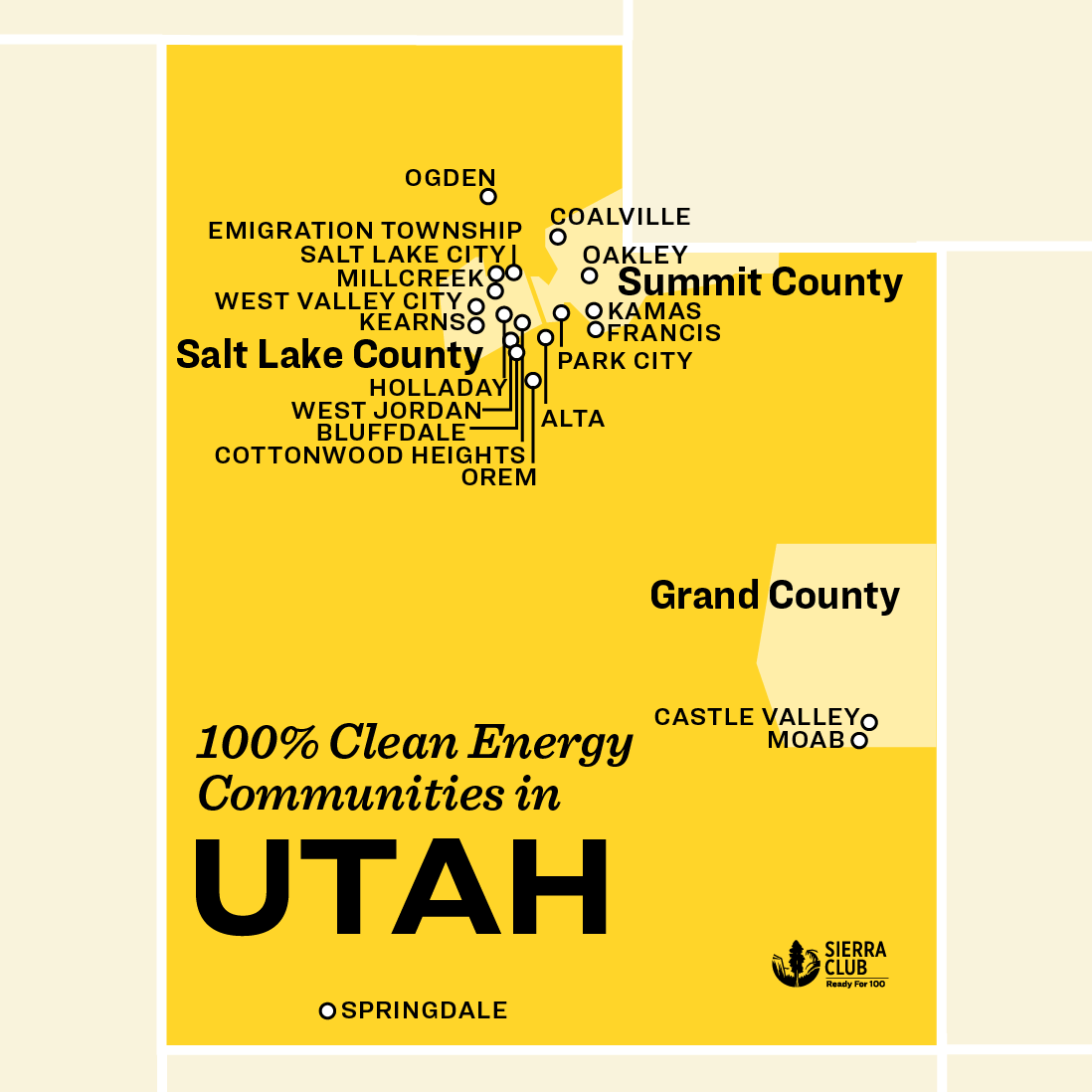
This kind of progress is only possible when we work with city, state, and local community leaders, and when leaders work with each other toward a common vision. And over the past few years, that is exactly what has happened.
The movement kicked off with Park City and Salt Lake City’s commitments to 100% renewable energy in 2016, followed quickly by Summit County and Moab in 2017. These were among the earliest communities pushing for a total clean energy transition in the country. They had the ambition and the vision, but they needed a way to build renewable energy at a faster rate than the utility’s projections. The communities worked to bring Rocky Mountain Power to the table to negotiate first-of-its-kind legislation that allows for exactly that. Under the landmark Community Renewable Energy Act, these communities will be able to achieve a clean energy transition in a decade. For a state that currently generates the vast majority of its electricity from coal, to say this is remarkable progress is an understatement.
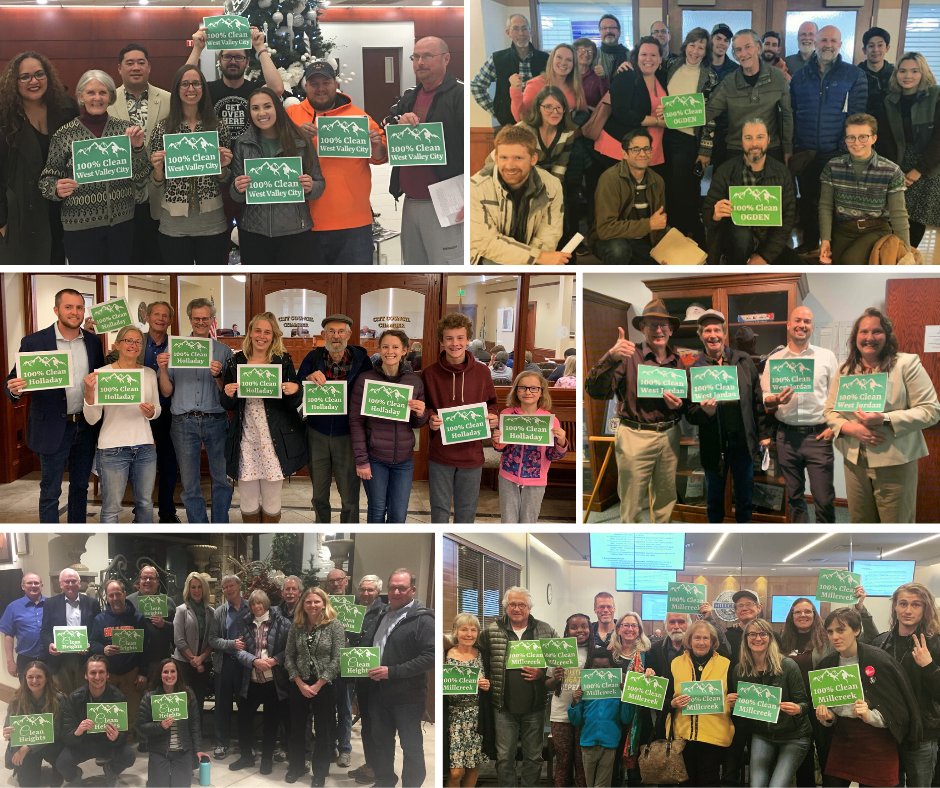
Photos from Lindsay Beebe
How Will It Work?
Under the legislation, Utah cities and counties served by Rocky Mountain Power will be able to achieve a net 100% renewable energy portfolio by 2030. This program will result in the construction of new renewable energy resources, servicing the PacifiCorp grid, and will prioritize local Utah projects that benefit communities directly. All individual customers in a community that passed a 100% renewable goal will be automatically opted-in to the program, with the opportunity to opt-out. Municipalities have until the end of December 2019 to commit to 100% renewable energy to qualify for the benefits of H.B. 411 -- and 23 municipalities have taken advantage of it. More than 840,000 Utahns now have the opportunity to achieve 100% of their electrical energy from clean sources by 2030. That’s more than a quarter of the state’s population, and approximately 37% of Rocky Mountain Power's total electricity sales in Utah.
The timing could not be more critical. Utah has a long history of mining and burning fossil fuels that pollute the air and hurt communities. In 2017, Moab was the first community where Sierra Club activists successfully lobbied for the adoption of a 100% clean energy resolution, and with good reason. Utah’s recreation mecca still contends with its toxic legacy of uranium milling and mining.
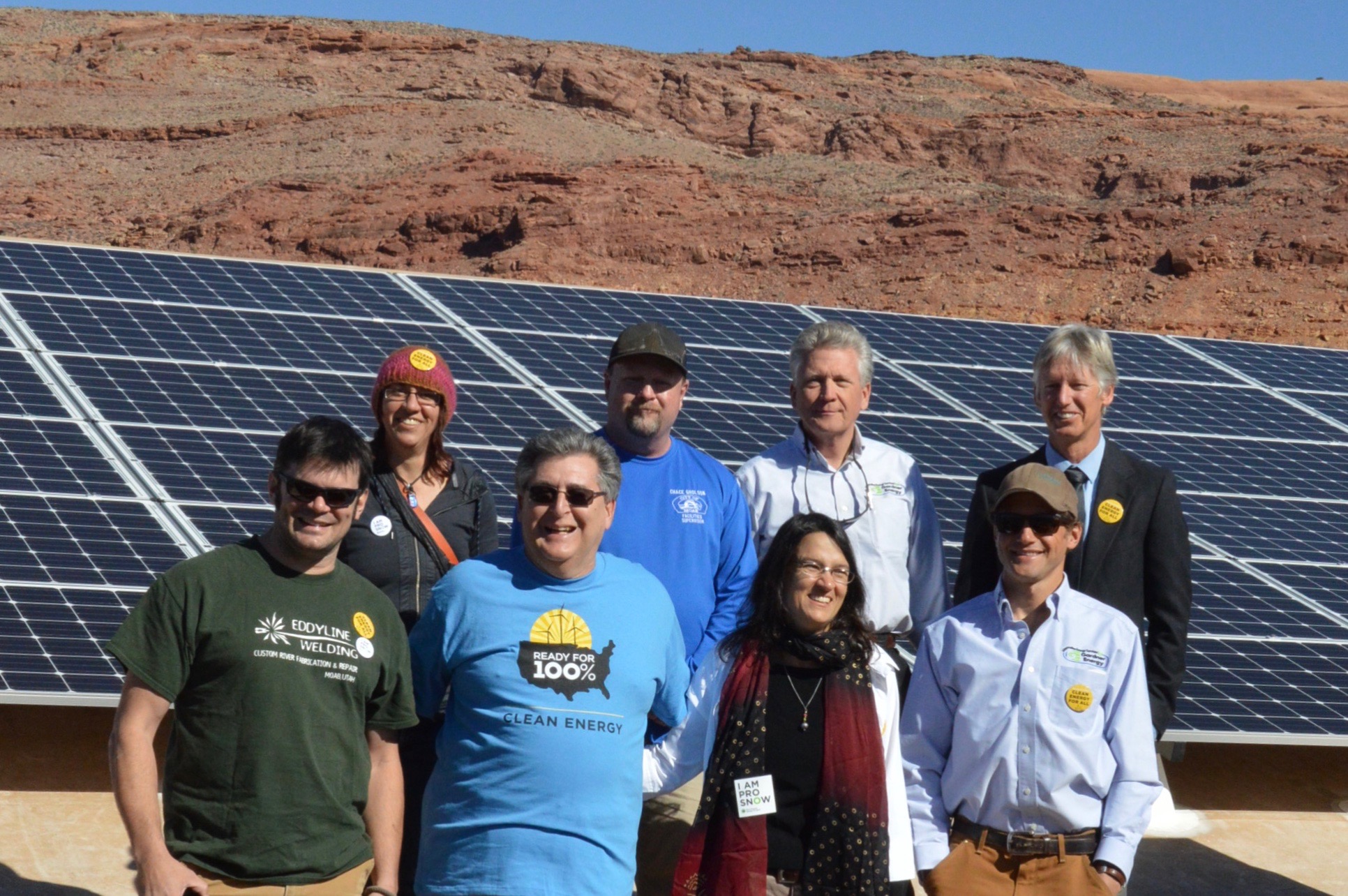
100% clean energy advocates in Moab, Utah. Photo from Lindsay Beebe
On the banks of the Colorado River in Moab, beneath the rugged cliffs of Arches National Park, the Department of Energy has spent more than 10 years cleaning up 16 million tons of radioactive uranium tailings. The Superfund site comes with a price tag of one billion taxpayer dollars, not to mention the countless lives harmed by decades of radioactive contamination. To add insult to injury, visitors to Moab expect crystal-clear vistas of Utah’s undulating red rock canyons, an expectation that can be dashed when skies are hazy from pollution emitted by nearby Rocky Mountain Power coal plants, Hunter and Huntington. Moab leaders and residents know that the key to a healthy community is to safeguard the air we breathe, the water we drink, and the lands we love. Just like Moab, cities and counties across Utah are realizing the benefits that transitioning to a clean energy economy can provide.
And as Utah communities transition to cleaner, cheaper renewable energy, communities that have not committed to 100% will be saddled with the cost of Rocky Mountain Power’s already uneconomic coal fleet, including the Hunter and Huntington power plants in Utah. Other states in the utility’s service area, like Oregon and Washington, have made bold commitments to stop paying for coal energy by 2030 and 2025, respectively. This means that fewer and fewer customers will be left to pay for expensive pollution control upgrades and volatile fuel costs at coal plants that the company plans to run into 2040 and beyond, long after the best science tells us we must stop burning coal.
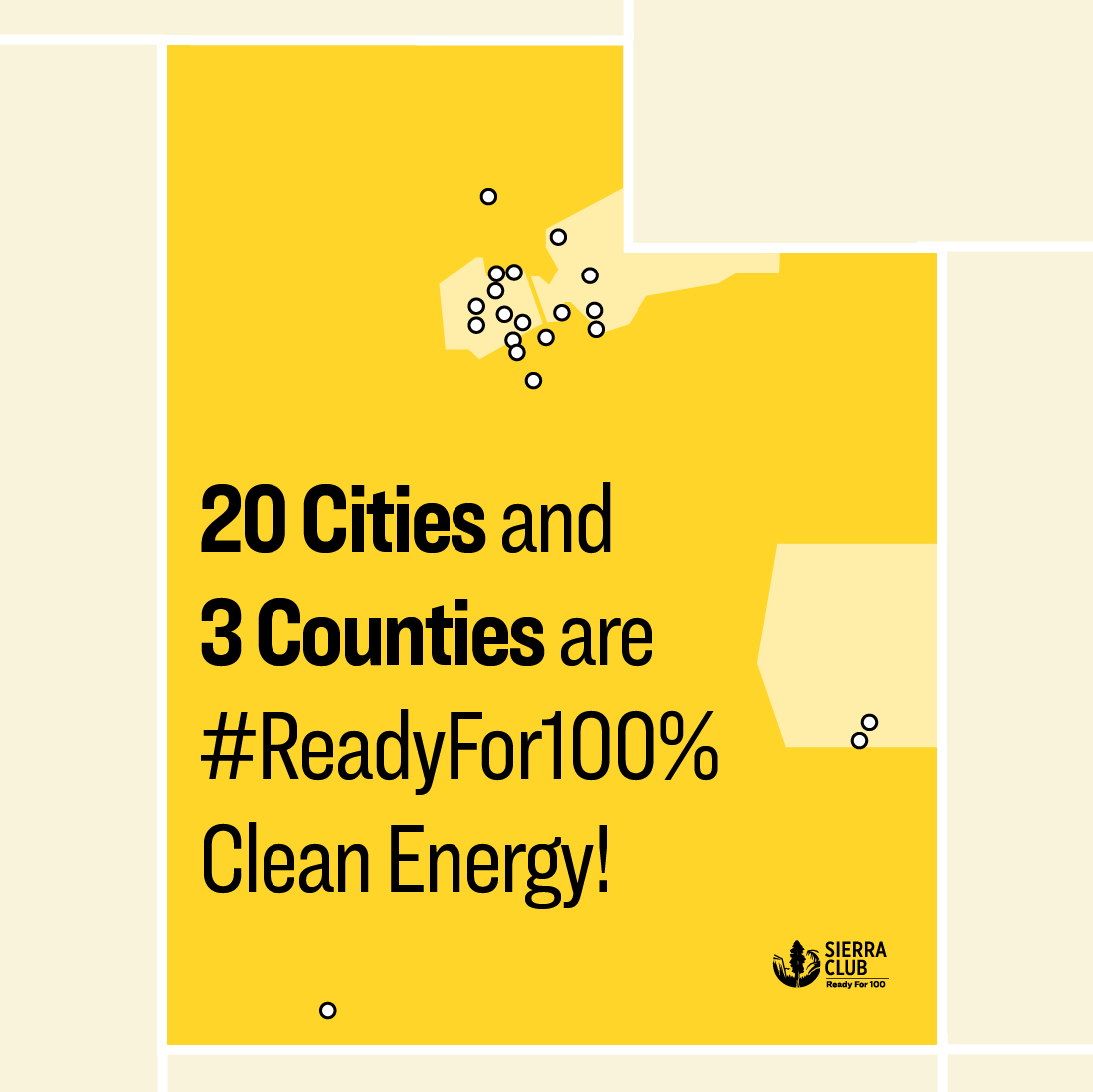
The changing moral and economic winds are forcing the company to reconsider long-held timelines for coal plant retirements. This year’s utility planning cycle was the first time we have seen Rocky Mountain Power propose significant coal plant retirements prior to 2030. It’s a good first step, but the utility’s 2019 plan also specifies that the majority of the largest coal fleet in the West will still be polluting our air and water a decade from now. There’s clearly more to do to ensure a livable future, and that’s where H.B. 411 gets to work.
The cities and counties that committed to 100% renewable energy show that Utahns want clean, affordable energy despite the utility’s over-reliance on outdated coal power. The Community Renewable Energy Act is the catalyst to developing the energy future Utah deserves.
Local to National Impact
Over 150 cities around the country have passed legislation to transition to 100% clean, renewable energy. As more cities, counties, and states start working together to give communities the chance to benefit from the environmental, economic, and health opportunities of renewable energy, models like H.B. 411 show what it looks like to make good on these commitments.
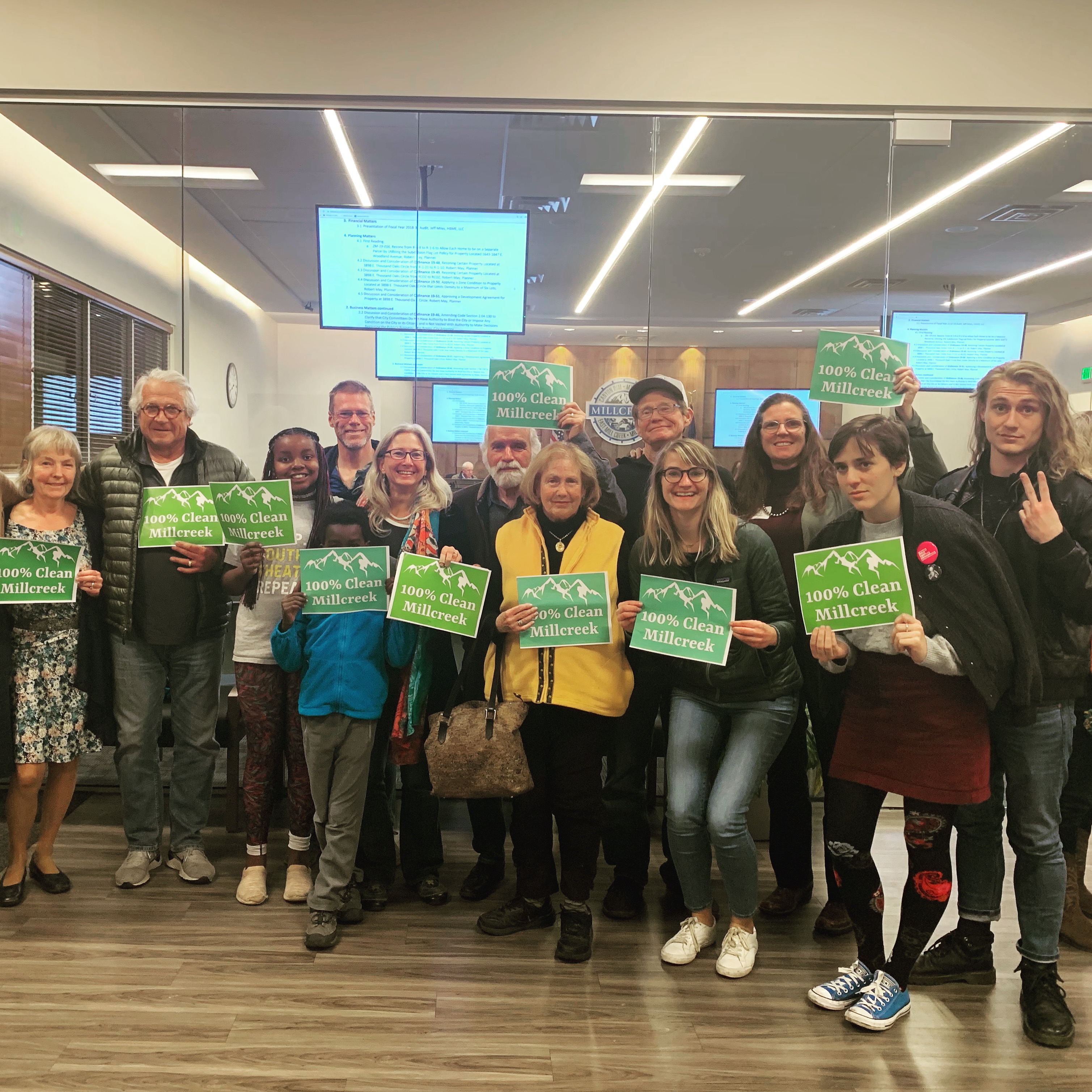
Millcreek, Utah, celebrating 100% clean energy commitment. Photo from Lindsay Beebe
The opportunity to build a clean energy economy and invest in Utahns’s health is immense. In 2018, Utah had the 10th highest solar-generating capacity of all states. Just one year earlier, it ranked 27th. Despite this recent growth in the solar industry, Utah still generates most of its electrical energy from coal. With over 840,000 Utahns now afforded the opportunity to achieve 100% clean energy, the state’s energy grid is headed for a major cleanup, which means benefits the whole region will enjoy.
Moving from coal to renewables like wind and solar can minimize regional haze and protect Utah’s iconic parks and recreational industry from damage caused by harmful pollutants and emissions. Transitioning to renewable energy will enable Utah to preserve the state’s outdoor industries, which are the backbone of many communities’ economies. It’s no mistake that recreation gateway communities like Alta and Zion’s Springdale joined the 100% cadre in 2019, taking a stand for sustainable economies.
Activists across Utah recognized these benefits and jumped to meet the challenge in 2019. Teams of volunteers worked diligently to educate elected leaders about the opportunity that H.B. 411 provides to make a positive impact on both the local and global level.
At the same time as other states (and the federal government) look to Utah communities’ leadership in pursuing innovative pathways to implement 100% clean electricity, it will be important for Utahns to keep demanding cleaner, healthier, more affordable power -- and to ensure that it benefits the many rather than the few.